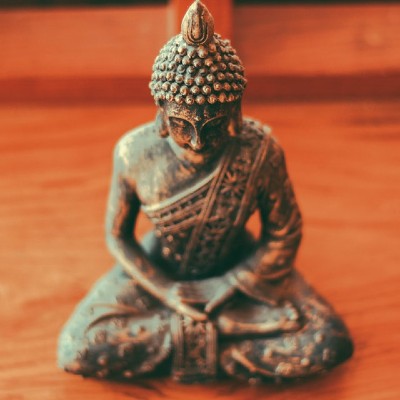Self-talk—that inner monologue that combines your conscious thoughts with unconscious beliefs and biases—helps your brain assess and interpret your daily experiences. “What we tell ourselves on an ongoing basis reflects not only the way we think but how we feel and act. [O]ur thoughts influence how we create our reality,” writes psychologist and author Fran Simone.
All of us have times when our inner voice drags us down, rather than lifting us up. The baggage of negative self-talk can be particularly pronounced and distressing among peer-influenced tweens and teens. Even more so when that self-talk goes unseen.
In the Family Mindfulness Program I direct, we offer engaging ways to bring the mindfulness toolkit to life for the youth members of our spiritual community through free, monthly classes. Mindfulness tools can help young people be aware of their inner world and respond to it skillfully.
One activity I call “Not Every Thought Is True” helps young people become more mindful of the true and untrue stories our thoughts tell us. I start the activity by discussing how being truthful includes both the outward truths we tell others and the inward truths we tell ourselves.
I share an outward example from my own life of a time when I didn’t tell the truth: As a teenager, I dented my car on a concrete pole. I was too embarrassed, nervous, and proud to tell my father the true story. Instead I said someone must have backed into the car. My dad smiled, noting the dent was round and in the shape of a pole. I had to tell more lies as the days went on to keep the first one alive. It was a heavy burden, one that I still remember more than 30 years later.
While we may think of outward lies as being the only kind of untruth, I created “Not Every Thought Is True” so that students can see how the little lies we tell ourselves during negative self-talk can create a similar burden that we carry around in our daily lives. By becoming aware of when these thoughts creep in and weigh us down, we also gain the power to let them go.
During the skit, I work with volunteers who act in different scenarios as teacher, parent, friend, bell ringer, and disguiser. Whenever I voice a thought that the audience deems untrue, audience members raise their hands and the bell rings, prompting the disguiser to give me a different item to wear or hold—glasses and a mustache, a bag of rocks, a gold scarf—to represent the nontruth I carry.
In one scenario, the teacher gives back a test I did poorly on and asks if I studied. Speaking my thoughts out loud, I say, “My teacher thinks I’m dumb. I am dumb. I will never understand this.” In another, in response to the parent who tells me I cannot get a pet, I say, “My parents never get me what I want. I am never going to talk to them again!” With each untrue thought, I put on a different prop. Soon, I don’t look much like myself because I am burdened with carrying around all these false ideas.
The skit ends with the audience helping me acknowledge each untrue thought and in turn, I let go of all the items that are not me. The takeaway for students is that, by paying close attention to the stories in our minds, we can start to notice which stories are true and which are not. As we let go of the false stories, we feel lighter and freer to be ourselves.
I follow the skit by reading the picture book The Empty Pot, a Chinese folktale by Demi. This story acknowledges that being honest with ourselves and others is not always comfortable. We sometimes tell little lies to ourselves to avoid accepting the sadness, disappointment, or embarrassment of the present moment. It takes courage to be honest, and the more honest we are, the more courageous we become. Rather than let the little lies of negative self-talk distort and disguise us, we can embrace our daily lives as our most authentic, courageous selves.



